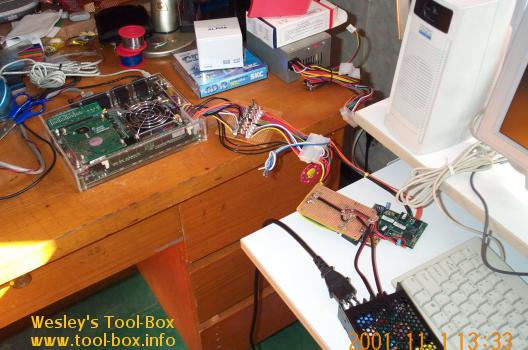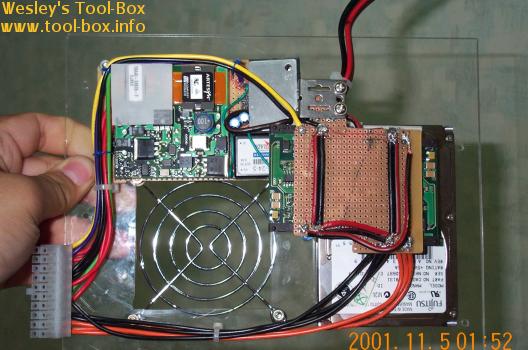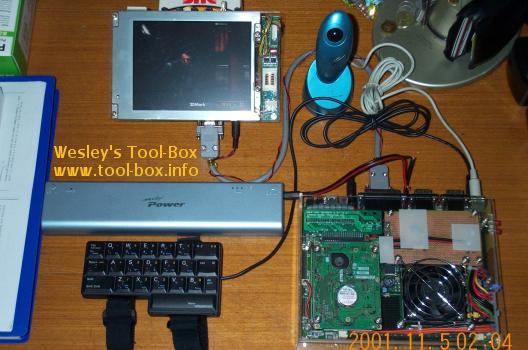Wearable Computing Project (7/10)
Posted by Wesley on
Due to the relatively low power requirements of the system as confirmed by an ATX circuit load measurement device I created (shown in the middle between the system and the power supply) the designed maximum of the power supply (3.3V - 20W, 5V - 40W, 12V - 20W) was not strained, as expected. The software controlling of the power worked as designed, and the output power was stable, observing no operational anomalies. In other words, it worked perfectly! Time to integrate it into the system.

At first, the power supply did not operate properly when put into the system. I've isolated the problem to be an unintended short-circuiting created by the hard disk. So I took some extra precaution and applied non-conductive film where the electrical components might touch each other. No problems occurred thereafter, thankfully.
Now that the power supply is in, I needed a battery to operate the system so that I wouldn't need external power when I wear it around. At this point, Mr. Yang, a reporter of I Love PC (yes, that company who lent me a space in the exhibition booth), heard about the project and offered to connect me to a manufacturer that produced auxiliary battery power for laptop computers. My power supply had flexible power input range of 18V~32V, so I had hoped that some of their models would fit into this requirements. I was relieved to learn that they had 19V model of their laptop auxiliary battery, 'MobyPower'. I asked for one, and they provided one for free in exchange for some exposure of their product on a magazine (guess which one?).

As you can see in the picture, the system was now successfully running off a battery... or so I thought initially. A slight problem was encountered in that, while being heavily stressed, the battery's output voltage decreased to an unacceptable level, far below the 18V, which caused my power supply to halt operation. I decided that the solution to the problem was to use two of their 15V models in serial operation so as to prevent any under-voltage situation. They heartily agreed to provide the two 15V battery packs when I returned the 19V model. This indeed solved the problem completely, and I now had a truly full-operational system. Is this the end? Of course not. Remember it was supposed to be 'worn'?